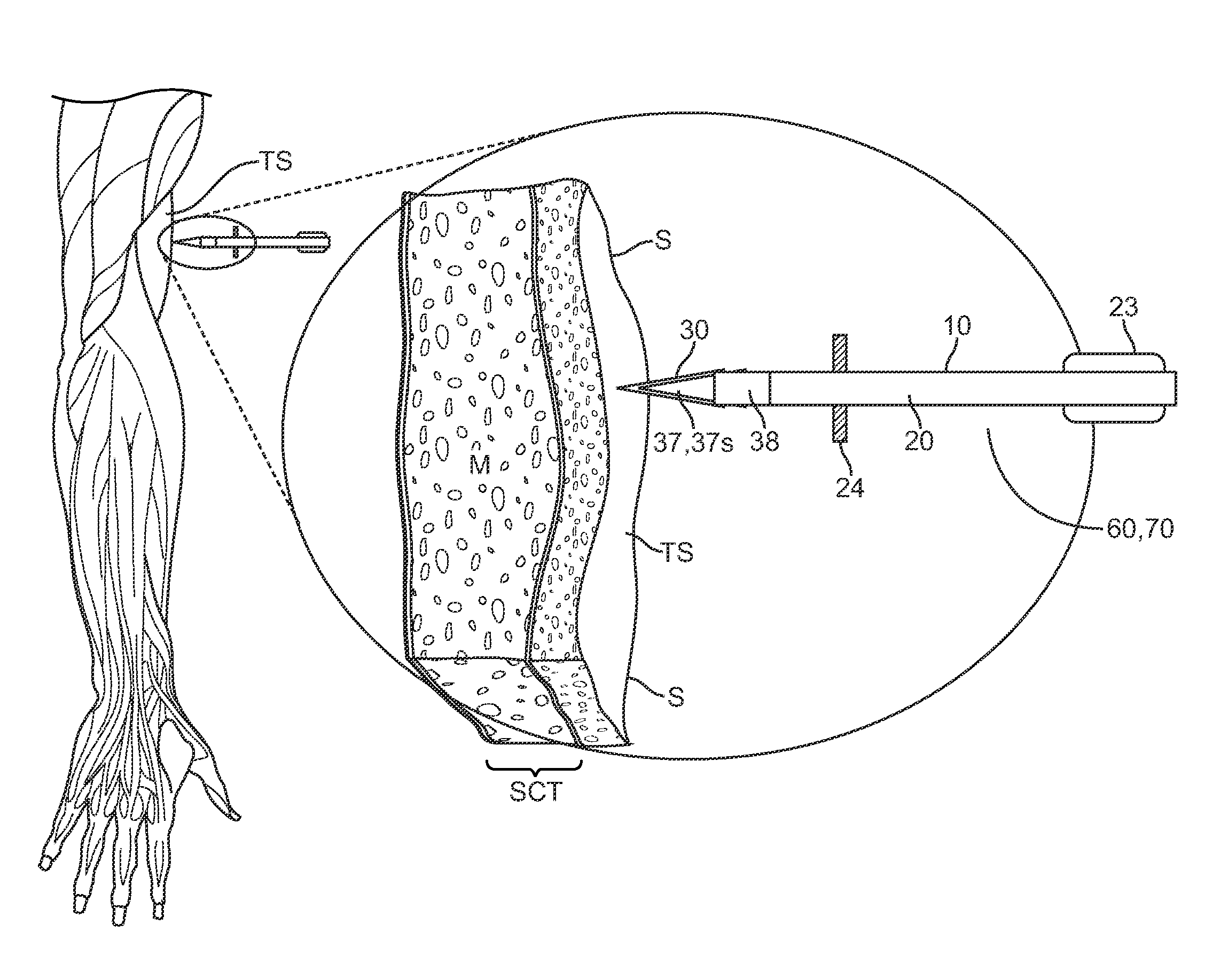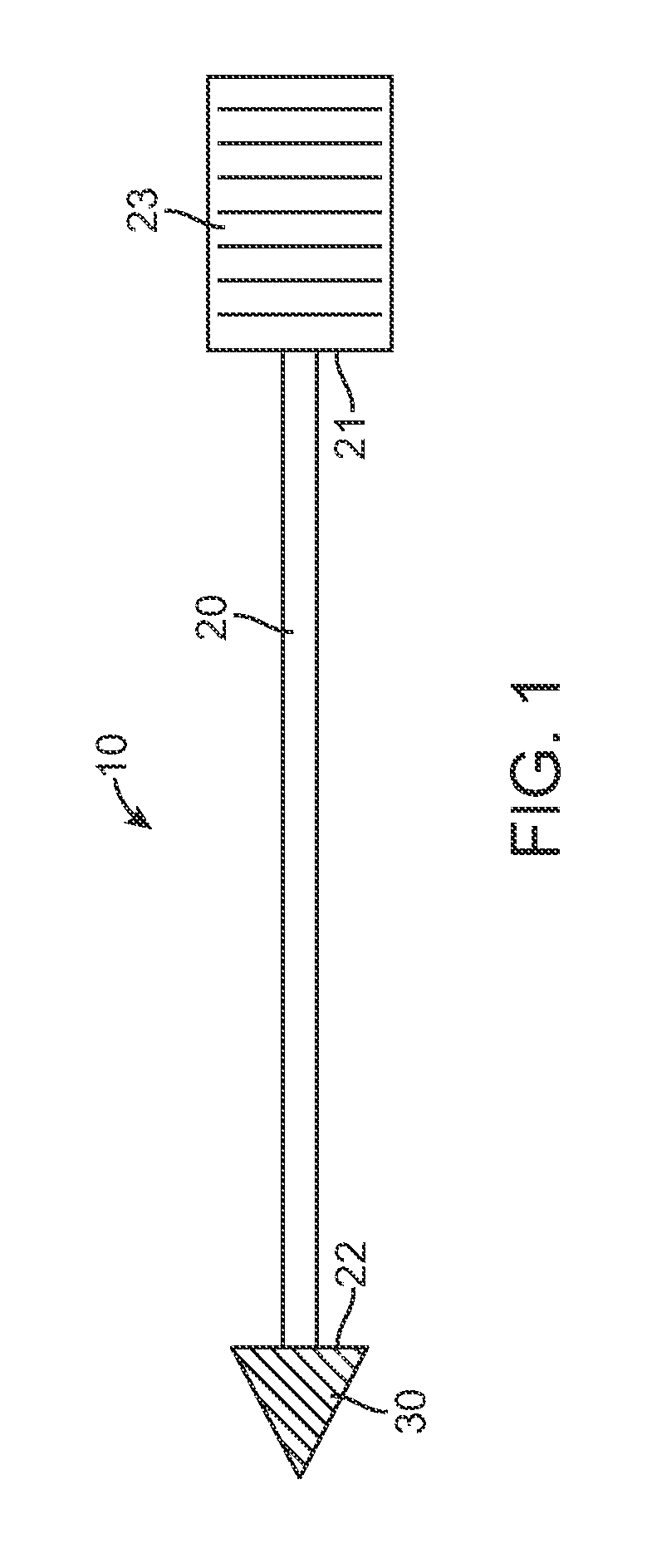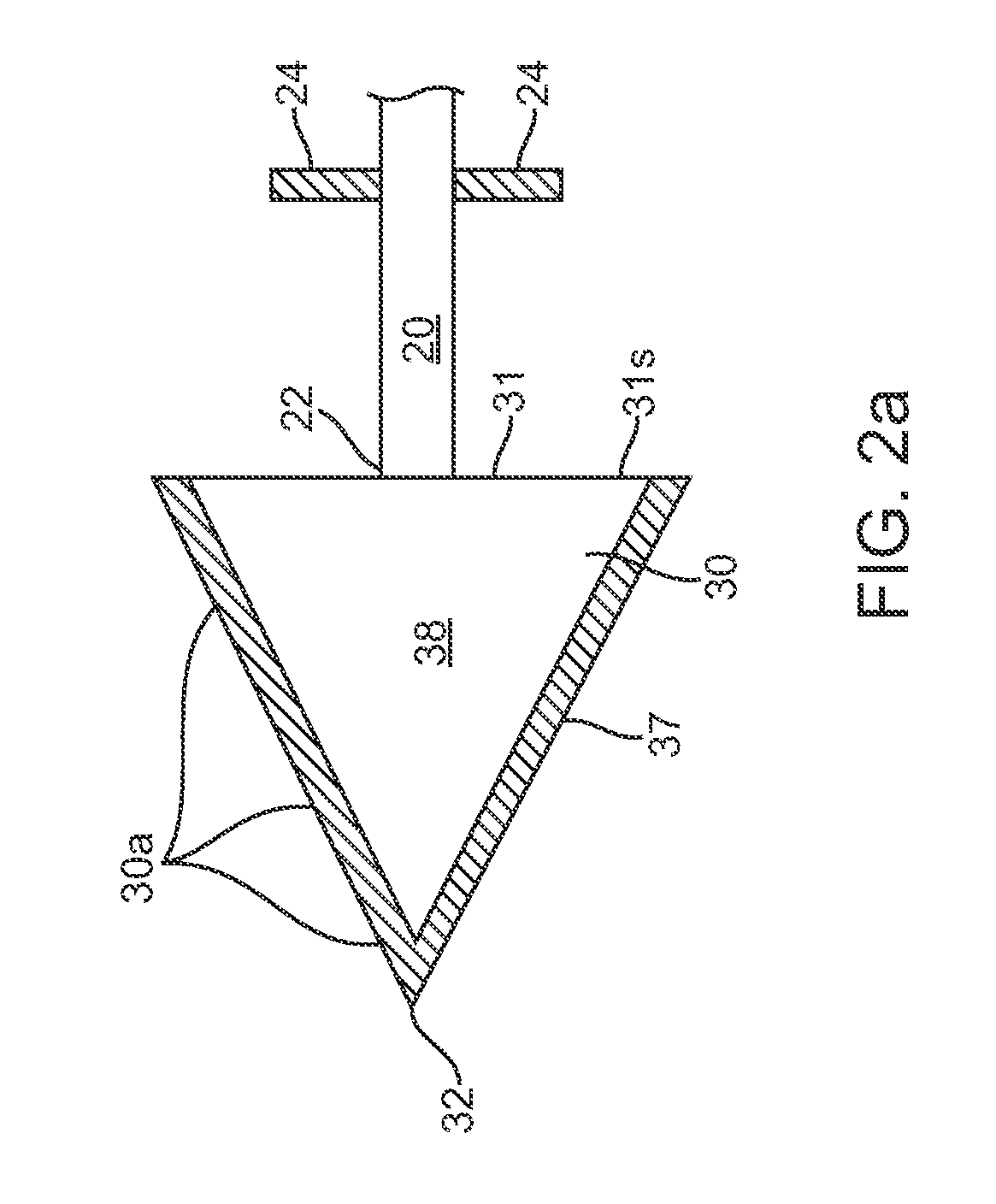[0004]Embodiments described herein provide a skin penetrating device, apparatus and method for the subcutaneous delivery of drugs and other therapeutic agents in solid form. Many embodiments provide a skin penetrating device that can subcutaneously deliver a selectable
dose of a solid form therapeutic agent such as
insulin which can be absorbed into the
blood stream to produce a
therapeutic effect for a selectable period of time.
[0006]Typically, the tissue penetrating element will have a tapered shape with a pointed end such as an arrowhead shape. In these and related embodiments, the penetrating element can also have a flattened proximal surface so as to hold or retain the element in a selected tissue site in or beneath the skin when the shaft is pulled away by means of a
normal force applied to an overlying tissue layer. Retention can also be facilitated through the use of one or more retaining features such as one or more barbs.
[0007]All or a portion of the tissue penetrating element can be fabricated from a solidly formed therapeutic agent composition which typically comprises the therapeutic agent and one or more pharmaceutical excipients such as binders, preservatives, disintegrants and time release agents. The excipients can also include hardening or binding agents configured to increase the
hardness and thus tissue penetrating properties of the penetrating element. One or more of these excipients along with therapeutic agent can be micronized and then formed into the shape of the penetrating element using
pharmaceutical manufacturing techniques known in the art. The penetrating element can be fabricated from a variety of drugs and other therapeutic agents including without limitation
antibiotics, antibodies, proteins,
insulin and other glucose regulating compounds, various chemotherapeutic agents, various vaccines, various hormones having birth control properties as well as combinations thereof. The amount of the therapeutic agent can be selected to achieve and maintain a selected
plasma concentration of the selected therapeutic agent for a selected time period, for example between 6, 12 or 24 hours or even longer. This can also be facilitated by fabricating the penetrating element to degrade or break down at a selectable rate in the body through the use of one or more disintegrants. In this way, the penetrating element can maintain the
plasma concentration of a selected therapeutic agent above a desired threshold for a selectable period of time.
[0008]In various embodiments of the invention, the tissue penetrating element can include a removable protective sheath to prevent accidental sticks and also to protect the therapeutic agent composition from oxidation and
humidity. In many embodiments, the tissue penetrating element can comprise an outer layer or
coating of non therapeutic material and an inner core containing the therapeutic agent composition. The outer layer can surround all or a portion of the inner core and is configured to degrade when exposed to the environment within the
muscle or other
subcutaneous tissue so as to
expose the inner core. The outer layer can be formulated to perform one or more functions. These include serving as a barrier to gas and
water vapor transmission to protect the inner core from oxidation and
humidity and thus extend the
shelf life of the therapeutic agent composition in a variety of ambient environments (e.g., tropical, dessert, etc.). The outer layer can also have a greater
hardness than the inner core so as to increase the tissue penetrating properties of the tissue penetrating element. In related embodiments, the outer layer can comprise a hollow shell that is filled by a core or
slug of therapeutic agent composition. Suitable materials for the outer
coating or shell can include one or more sugars such as
sucrose or other materials such as polyglycolic acid which are readily broken down by tissue fluids in
muscle tissue or other
subcutaneous tissue environments. The outer
coating can also comprise one or more analgesics, anti-inflammatory and like agents to reduce any pain and swelling associated with implantation of the tissue penetrating element beneath the skin.
[0009]In another aspect of the invention, the tissue penetrating element can contain one or more liquid therapeutic agents that fill cavities formed in the tissue penetrating element. Similar to the mechanism for the absorption of solid embodiments, absorption of the outer layer of the penetrating element by
body tissue fluids causes release of the inner liquid. The liquid therapeutic agent can be the same or a different agent as the agent compounded into the outer solid
layers. In some embodiments, the liquid agent can comprise a compound which has a synergistic effect with or otherwise extends the pharmacologic
half life of the therapeutic agent contained in the solid outer
layers of the penetrating element.
 Login to View More
Login to View More  Login to View More
Login to View More 


